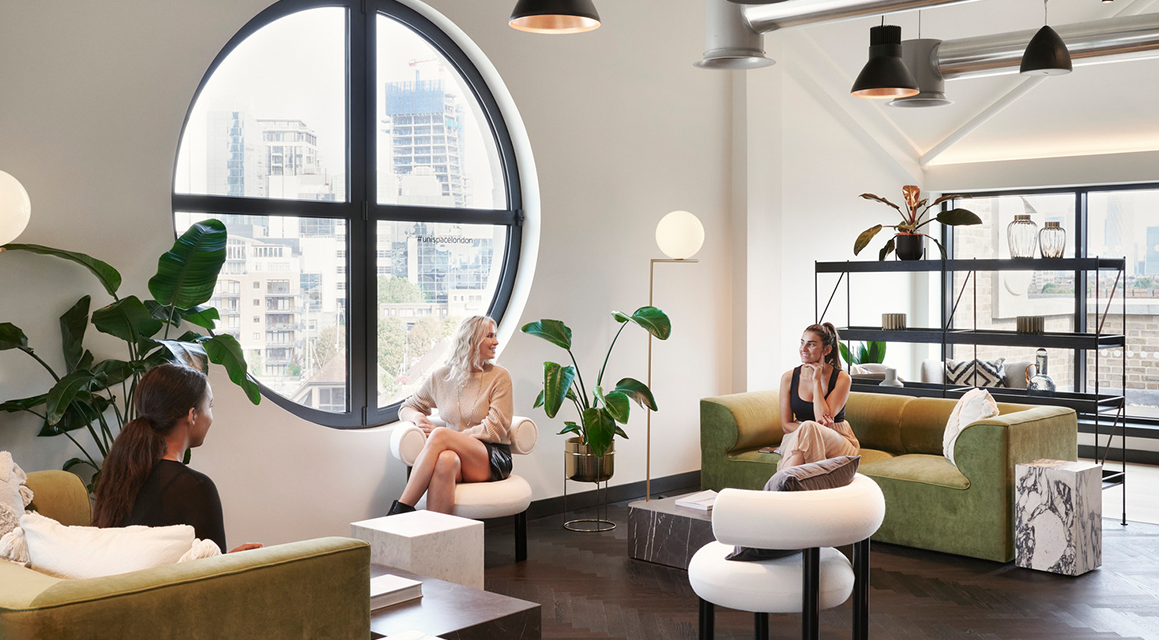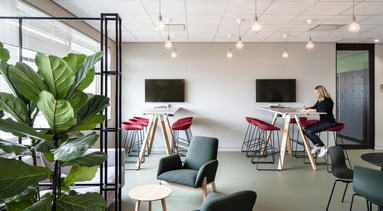Understanding the workplace revolution

A year of remote working has challenged conventional workplace approaches, empowered employees and encouraged new modes of collaboration. But what does this mean once employees reconvene in the physical workplace?
The biggest barrier to remote working has always been resistance from management. This was true in 1974 when the idea of ‘telecommuting’ was first conceived, and it was true in 2019, when San Jose State University researchers found that managerial resistance was still the major perceived obstacle to flexible working.
Now, enforced changes to ways of working from the Covid-19 pandemic are having a major impact on how businesses are run, and how workforces are managed.
Three key trends are emerging:
- Some levels of management may no longer be needed
- Removed from traditional hierarchies, employees at all levels are finding opportunities to thrive
- Leadership and culture remain as essential as ever
Trust your teams to perform, wherever they are - work is an activity, not a place
Over the course of 2020, we've seen a marked difference in the performance levels of organisations that actively empower and support their home workers, versus those that attempt to replicate traditional management and oversight structures in a remote environment.
Nicola Harris, Global Principal People and Culture at Unispace explains that, “The real difference is mindset – management needs to understand that work is an activity, not a place. We need to put more trust in teams to carry out the tasks they are responsible for, no matter where they do them.”
Often, where trust issues occur, they are more related to management insecurities than to employee under-performance. According to Harvard Business Review, “When such doubts creep in, managers can start to develop an unreasonable expectation that those team members be available at all times, ultimately disrupting their work-home balance.”
This form of remote micromanagement delivers few benefits. Employees who feel mistrusted are more likely to doubt their own performance, leading to lower autonomy. In contrast, where leadership structures have been flattened as a result of remote working, organisations are finding themselves more productive as a consequence, with employees taking ownership of their task-lists and managing their workloads in line with their own preferences.
As Harris notes, “At Unispace our behaviours, framework and systems support working from anywhere. Something many of our clients are now working towards. We’re a high responsibility, high accountability organisation and that means employees don’t need to be micro-managed. They need great guidance, culture, freedom and trust to deliver.”
Build a hybrid working model to support employees’ working patterns
This revelation doesn’t need to spell the end for middle-management. Freed up from conventional oversight duties, many managers are finding themselves with more focus time. This explains why a recent Dropbox study shows them to be more reluctant to return to the office than their team.
Remote working also allows us to collaborate in new and different ways. Outside of the physical office, traditional hierarchies are abandoned with CEOs able to connect directly with all ranks of the company. We're seeing a surge in cross-connectivity, with employees collaborating more with one another and feeling more empowered to communicate directly with leadership. The positive impact is that companies can be leaner and run more effectively. Employees have a greater sense of self management and responsibility.
"As hierarchies break down, organisations are spotting new opportunities to innovate and create a more collaborative working culture,” says Harris. “This needs to be transferred to the physical office in 2021, which may mean rethinking how space is used, how meetings are configured and run, and how easy it is for employees of different levels to cross paths.”
Our data from teams returning to work in the southern hemisphere shows that 56% of staff cite ‘building connections and professional network’ as their main motivator for coming into the office. So, if you want to entice your heads-down middle-managers back, a hybrid model geared towards connectivity is the way to go.
How to optimise physical spaces to enable cross-connectivity
Physical environments need to be capable of supporting the new forms of collaboration. Returning to the office should not mean a return to the hierarchies of old. Businesses can do this by:
- Reconfiguring the office as a place to go for problem-solving, innovation or group/community experiences
- Removing assigned desk for people who aren’t there most of the time, and replacing them with shared workspaces that encourage teams and departments to mix
- Creating spaces and zones built around specific business outcomes, to help people find the right space for the task at hand and come together at the right moments
Human connections sit at the heart of the hybrid office model
"Your physical environment needs to be a place where leadership can thrive, and employees see clear value from showing up in-person. While the workplace management revolution is paving the way for new internal structures, people still need good leaders.” says Harris.
This insight should be the guiding principle in 2021 as organisations return to the physical workplace, and businesses look to adopt hybrid models, involving ongoing remote-working punctuated by regular visits to the office.
Strong leadership requires strong human connections, whether it’s inspiring the workforce around a future vision, or it’s hosting check-ins to ensure team members feel well-supported. This type of leadership remains far better suited to in-person interaction than to Zoom meetings or webinars. And it’s easy to see how a hybrid working model could be developed along these lines, with employees travelling into the physical office to share in high-impact leadership ‘moments’.
Our hybrid workplace framework, Propeller, offers a number of pointers on how organisations can embrace this type of working model:
- Propeller turns the office into an outcomes-based place of innovation and culture-building. It recognises that the battle for where focus work should be conducted has been solved… and it isn’t in the office.
- Propeller starts with data gathering, looking at employee work modes and preferences to understand their intent and purpose in coming to the office. This is the starting point for determining what technology and spaces are required to make their commute worth the investment.
- By taking this approach, organisations give themselves an opportunity to strengthen culture and boost productivity and work satisfaction.
- As networking and socialisation is shown to be the primary motivator for coming to the office, organisations can use this as a platform for improving and reinforcing cultural aspects or build on messaging and behaviours.
- Similarly, spaces to hold gatherings and town halls are not new, but rooting them centrally and making them flexible – i.e. drop-in or fly-by spaces that can also be accessed remotely – will encourage people to mix and share information, both physically and digitally.
Key takeaways
It’s been a long and much-disrupted year for businesses everywhere. But it has nevertheless presented an opportunity to break with some of the unproductive and damaging management practices of old. The challenge now is to make new habits stick in the workplace of the future.
- Trust your teams to perform, wherever they are - work is an activity, not a place
- Take the time to understand your employees’ working patterns and build a hybrid working model to support them
- Optimise physical spaces to enable cross-connectivity
- Your physical environment needs to be a place where leadership can thrive, and employees see clear value from showing up in-person
- Human connections sit at the heart of the hybrid office model


